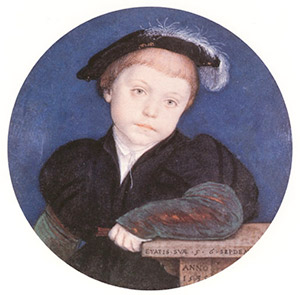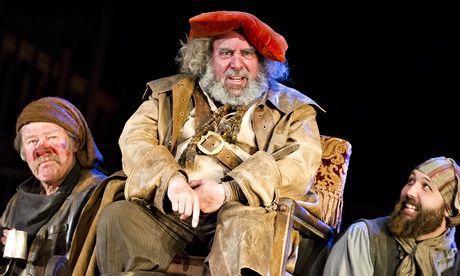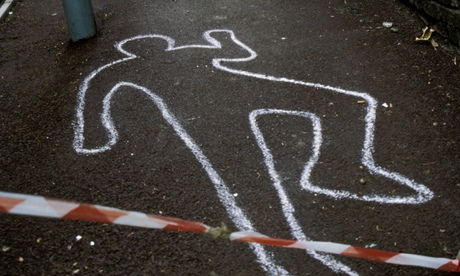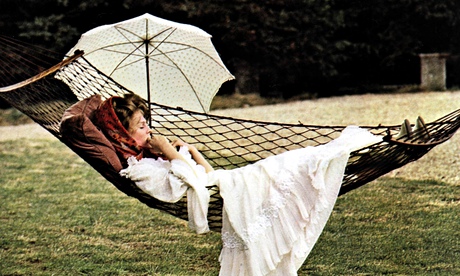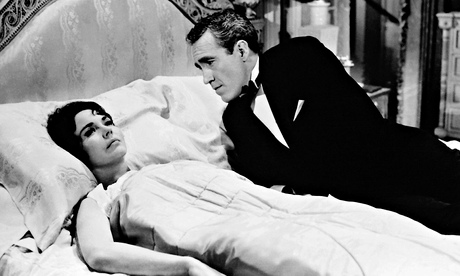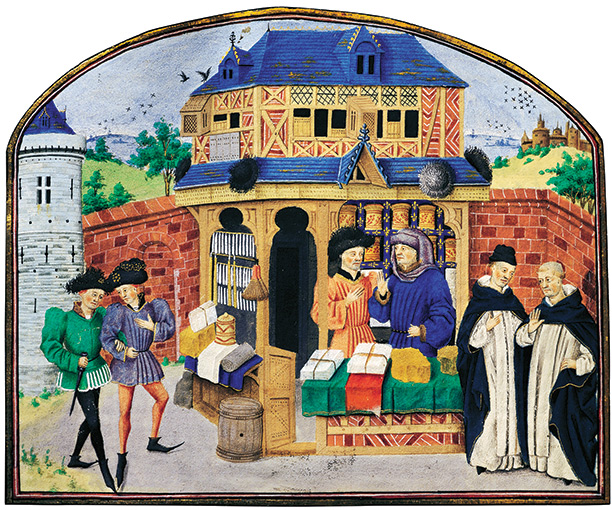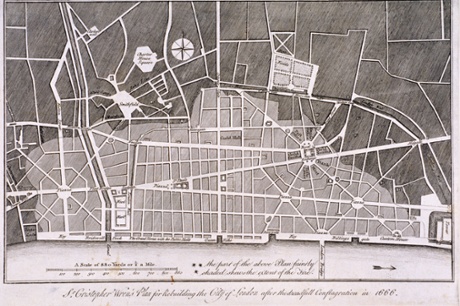Thomas Cromwell’s last words and moments on 28 July, 1540 continue to cause quite a lot of discussion, and the following piece is offered to try and clarify some points.
![Thomas Cromwell. Portrait by Hans Holbein the Younger, 1532–1533. Image from http://en.wikipedia.org/wiki/Thomas_Cromwell Thomas Cromwell. Portrait by Hans Holbein the Younger, 1532–1533. Image from http://en.wikipedia.org/wiki/Thomas_Cromwell]()
Edward Hall, the Tudor historian, completes his account of the last moments of Thomas Cromwell, after his last speech and prayer, in this way: Cromwell ‘godly and lovingly exhorted them that were about him on the scaffold’ and committed his soul to God, then ‘patiently suffered the stroke of the axe, by a ragged and butcherly miser, who very ungoodly [sic] performed the office’. The italics are mine: one stroke only, it seems, but this ‘ungoodly’ has led to speculation that the execution was horribly botched.
A Victorian essayist, Arthur Galton, quotes a ‘contemporary writer’ (Galton’s words) saying that two executioners were ‘chopping the Lord Cromwell’s neck and head for nearly half an hour’ (Galton has these words in quotes).
Galton does not name the writer or give any source reference; nor does he explain why a second executioner has turned up. Galton’s essay, moreover, is a very superficial survey of his subject, and he is a bit at sea over Cromwell’s fall. Cromwell, he says, ‘died professing the Anglo–Catholicism which his own policy had done so much to restore’, which is rather silly. He is also wrong about Cromwell’s Protestant fellow prisoners ‘who had been caught in the meshes of the Six Articles’ and later burned: Barnes, Garrett and Jerome were in the Tower because of disputes with Bishop Gardiner in Lent, 1540, not the Act of Six Articles, 1539.
Surviving contemporary reports, in fact, tell a very different story. The Chronicle of Thomas Wriothesley, who knew Cromwell well, says simply that he was beheaded. Likewise Charles de Marillac, the French ambassador, who had been following the events leading up to Cromwell’s arrest very closely, and sending detailed reports toFrance. Marillac adds that Cromwell was spared a worse death (that means he was not hanged, drawn and quartered). Richard Hilles, aLondon merchant who also knew Cromwell, says much the same. The Venetian ambassador, who did not like Cromwell, adds that his end was better he deserved, which does not sound as though it was agonisingly drawn out. A London Chronicler says that the head (apparently intact) was set up on London Bridge; but if two men had been hacking away at it with axes for half an hour, there would have been no head left to put anywhere.
Moving on to the Elizabethan era, John Foxe the martyrologist was not squeamish. He graphically tells of the prolonged torture at the stake of John Lambert in Henry’s reign and Nicholas Ridley in Mary’s; so there is no reason why he would have kept silent if something hideous had happened to Cromwell. But Foxe knows nothing of Galton’s witness.
Soon after Foxe, a highly inventive narrative of Henry’s reign was composed by an unknown Spanish author, commonly known as the Spanish Chronicle. Here Mark Smeaton is tortured with a knotted rope tied round his head to get him to confess that he and Anne Boleyn were lovers. Sadly for those who trust in this sort of thing, however, the Chronicle also has Cromwell (who died in 1540) investigating adultery charges against Catherine Howard (which did not come to light until the following year). Then after Catherine’s demise, arrangements begin for Henry’s marriage to Anne of Cleves. (This is no misprint: this writer really does make Catherine Howard Henry’s fourth wife and Anne of Cleves the fifth.) Later, after Anne’s unhappy meeting with Henry, Cromwell gets up at a dinner one evening and tells everyone he is going to make himself king, for which he is arrested. One of those at this dinner is the Marquis of Exeter (who died in 1538).
No surprise, therefore, to find something new in the Chronicle when we get to Cromwell’s fall. Here Cromwell asks the headsmen: ‘Pray, if possible, cut off the head with one blow, so that I may not suffer much’. But even the Chronicle says that Cromwell died ‘with a single blow of the axe’.
The Elizabethan historian Raphael Holinshed follows Hall and Foxe for the most part, though here the executioner ‘ill favoureblie’ [sic] performed the office. But John Stow (1600) has another variation – he says that Cromwell ‘patiently suffered the strokes [plural] of the axe by the hands of him who ilfavoredly [sic] performed his office’. The plural could suggest that a hitherto unpleasant secret is slowly being revealed. It could, however, be a simple misprint or transcription error, because Andrew Willet, writing about the same time (1603) insists that Cromwell’s end was ‘neither unfortunate nor miserable’.
Cromwell was also the subject of a play or interlude, acted by those of the royal household in the reign of King James. The author is known to us only by his initials, ‘W.S.’ When his last hour comes, Cromwell bids farewell to his friends and those around him, including Stephen Gardiner, his chief enemy. The executioner begs his forgiveness, which is freely granted. Cromwell and the headsman leave the stage, and friends speak sadly one to another. Then in comes a man with Cromwell’s head. Then Ralph Sadler arrives in haste with a reprieve from the king, but it is too late. It is all very genteel and obviously not intended to be factual. Nevertheless there is no hint of a bad end.
Moving on to the middle of the seventeenth century, another Spanish writer, Rodrigo Mendes Silva, follows the Spanish Chronicle, though this seems still largely ignored inEngland. When the sign was given, writes Gilbert Burnet, ‘the executioner cut off his head very barbarously’ – a similar thought to the earlier ‘ill favoureblie’.
Then in 1695, a writer identified in the records only as ‘R.B.’, though more knowledgeable on Cromwell than Galton, says that the head was ‘cut off at three or four strokes by the hand of an unskilful and butcherly executioner’. This reads like a best guess to interpret Hall’s ‘ungoodly’. But there is still only one executioner, and at worst three or four stokes, which would take less than thirty seconds, not half an hour. Right up to at the end of the seventeenth century, it seems that no one knew of Galton’s source.
Nor did the Victorians think much of it. No mention is made of it in three leading historical works of his time: Froude’s History of England, vol 3, 1893, Merriman’s Life and Letters of Thomas Cromwell, 1902, and Pollard’s, Henry VIII, 1905. Merriman, no friend of Cromwell, lists Galton in his bibliography but ignores him in the section on Cromwell’s fall.
Maybe Galton’s source will turn up one day, somewhere. Maybe, however, it is just a fiction, as Froude, Merriman and Pollard apparently thought. Hall says that Cromwell’s enemies rejoiced at his misfortune, and some did invent accounts of it. Less than a month after the event Cromwell’s main Lutheran ally, Philip Melanchthon, heard that he had been strangled, quartered and burned.
But none of this adequately explains Hall’s ‘ungoodly’. Froude suggests that Cromwell’s death ‘seems to have been needlessly painful through the awkwardness of the executioner’. It is possible that the execution did not proceed quite as surgically as it should have done, but it is more likely that Froude and others were guessing and on the wrong trail, as a few quotes from Hall’s contemporaries will show.
An English translation in 1533 of the Enchiridion by Erasmus, the Dutch humanist scholar, reproved ‘ungoodly manners’, meaning bad, immoral conduct, not clumsiness or inefficiency. ‘Set before thine eye’, he warns, ‘how ungoodly’ it is, among other things, to ‘submit thyself unto a stinking harlot’. And ‘if honour be given of man for an ungoodly and unhonest [sic] thing … this is not honour but great dishonesty’. Then in another translation, this one of the Paraphrases of Erasmus, the daughter of Herod danced ‘ungoodly’ (meaning seductively, immorally); and Jesus was ‘ungoodly and shamefully handled’ atCalvary (this refers to the mocking and jeering, not the execution itself). In an anonymous commentary on the parable of the wedding feast in chapter 22 of St. Matthew’s Gospel, those who refuse the king’s invitation to the banquet are ‘ungoodly’. ‘Little sins’ warns Bishop Fisher, ‘deform our souls and maketh them ungoodly’. ‘Good things ungoodly used are not good’ says Roger Ascham, tutor to Prince Edward and Princess Elizabeth.
Other examples could be given where, in Hall’s time, ‘ungoodly’ did not mean ineptly or inefficiently; but basely, shamefully, badly in a moral sense. This could be why Holinshed has ‘ill favoureblie’ instead: the meaning is the same (see above).
It may be difficult for us to imagine a ‘goodly’ or ‘favourable’ public beheading, but the Tudors were more inured than we are to this sort of thing. Bizarre though it may seem nowadays, there were scaffold civilities that had to be observed. The headsman would kneel and ask forgiveness of the condemned, who would grant it gladly, with a smile, a kind word and maybe a gift. There was no need for malice between the two. The one was not just the instrument of judgement; he was also sending the other out of this troubled life to a better world (he hoped).
My guess, therefore, is that there was only one stroke of the axe, but this executioner behaved spitefully in some way that Hall does not describe in detail. Hall calls him a ‘miser’, which used to mean a contemptible character, not someone who hoards money. Maybe Cromwell was manhandled, or maybe there was some coarse ribaldry before or after the deed was done. Others like Hilles and Foxe either did not know what had offended Hall, or if they did, they thought it not worthy of a mention. This way ‘ungoodly’ can be harmonised with the testimonies of reliable witnesses that Cromwell’s end was mercifully quick.
*
On the morning of the 28 July, 1540, according to Foxe, Cromwell called for his breakfast, and after ‘cheerfully eating the same’ he set out for the scaffold. On the way he met Lord Hungerford, condemned to die for serious sexual offences, including incest with his daughter, and looking ‘heavy and doleful’. Cromwell, still cheerful, bid him take heart and not fear. ‘For if you repent and be heartily sorry for what you have done, there is for you mercy enough with the Lord, who for Christ’s sake will forgive you; and therefore be not dismayed. And though the breakfast which we are going to be sharp, yet trusting to the mercy of the Lord, we shall have a joyful dinner’.
Let us hope he enjoyed his dinner. And that Henry joined him shortly after. It is pleasing to think of them reunited in realms above. Likewise Henry and his six wives happily together at last, with no divorce trials or crises of conscience to worry about; and Elizabeth and other Tudor favourites, all perfect friends at the same convivial table; and all having a good old laugh at the stories we still tell about them.
Source material
* Anon, Here begynneth the pystles and gospels …, 1538 (STC 2nd edn 2966–3; Reel: STC 557:13b), p. 52
* Ascham, R., Toxophilus …, 1545 (STC 2nd edn 837; Reel: STC21:29), p. 17
* Burnet, G., History of the Reformation, ed. Pocock (1865), vol 1, p. 453
* A [London] Chronicle … Henry VIII, ed Hopper, Camden Miscellany 4, 1st series 73, p. 15
* Erasmus, Enchiridion … , 1533 (STC 2nd edn 10479; Reel: STC 37:07), docs 152–3, 162
* Erasmus, The … paraphrase of Erasmus on the New Testament, 1548 (STC 2nd edn 2854.5; Reel: STC 1772:01), pp. 56, 180
* Fisher, J., Two fruytfull sermons …, 1532 (STC 2nd edn 10909; Reel: STC 134:02), doc 28
* Foxe, J. Acts and Monuments … ed. Pratt (4th edn, 1877): on Cromwell and the dinner, vol 5, pp. 402–3, 438; on Lambert, vol 5, p. 236; on Ridley, vol 7, pp. 550–51
* Froude, J.A., History of England, vol 3 (1893), pp. 336–9
* Galton, A., The Character and Times of Thomas Cromwell: A Sixteenth Century Criticism (1887), pp. 155–6
* Hall, E., Chronicle … to the end of the reign of Henry VIII (London, 1809), p. 839
* Hilles in Original Letters … English Reformation, ed. Robinson, Parker Society, vol 1, p. 203
* Holinshed, R., Chronicles of England…London, 1585 (STC 2nd edn 13569.5; Reel: STC 2293:01), p. 951.
* Marillac in Letters and Papers … Henry VIII, vol 15, num 926
* Melanchthons Briefwechsel, ed. Scheible, T9, num 2473 [3]
* Mendes Silva quoted in Merriman vol 1, p. 302, fn 3
* Merriman, R.B., Life and Letters of Thomas Cromwell (1902), vol 1, pp. 300–304
* Pollard, A., Henry VIII (1905), p. 316
* ‘R.B.’, ‘Remarks upon the Life, Actions and Fatal Fall of Thomas Cromwell’, in The Unfortunate Court Favourites of England …, Nath. Crouch, 1695 (Wing/C.7351), p. 153
* Spanish Chronicle, or Chronicle of Henry VIII … in Spanish by an unknown hand, trans. and ed. Hume (1889), pp. 60–61; 75, 84–97, 104
* Stow, J., Annales of England,London, Newbery, 1600 (STC 2nd edn 23335; Reel: STC 1611:07), p. 976
* Venetian ambassador: Calendar of State Papers, Venetian, vol 5, 1534–54, num 224
* Willet, A., An antilogie or counterplea to an … apologetical epistle … , 1603 (STC 2nd edn 25672, Reel: STC 1263:02), p. 194
* Wriothesley’s Chronicle (Camden 2nd series, 11, 1875), p. 120
* ‘W.S.’, The true chronicle historie of the whole life and death of Thomas Lord Cromwell, as it hath beene sundry times publikely acted by the king’s maiesties seruants, 1613, (STC 2nd edn 21533; Reel: STC 1334:04), pp. 26–7.
John Schofield is a Visiting Scholar in the School of Historical Studies at the University of Newcastle upon Tyne. He holds a PhD in Reformation history, is an expect of Thomas Cromwell and is also the author of 'Cromwell to Cromwell' and 'The Rise and Fall of Thomas Cromwell'.








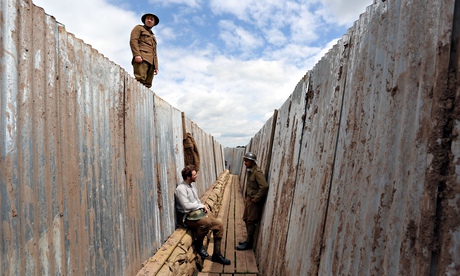










![Could the Duchess of Alba be the next Queen of Scotland? [WENN] Could the Duchess of Alba be the next Queen of Scotland? [WENN]](http://cdn.images.express.co.uk/img/dynamic/1/590x/Scotland_Independence_Duchess_of_Alba-460698.jpg)






















